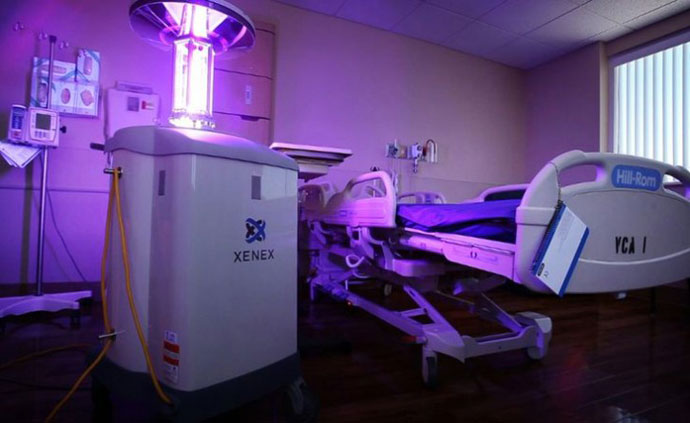
What defense do we have against Ebola, one of the world’s deadliest disease? Light-zapping robots, that’s what.
An autonomous machine from San Antonio-based Xenex Disinfection is currently doing battle against viruses and bacteria in 250 hospitals across the country, including the hospital in Dallas where Thomas Eric Duncan, the first Ebola patient diagnosed in the U.S., was treated and eventually died.
The robot kills viruses and bacteria uses ultraviolet light to destroying a virus’s or bacteria’s DNA.
I know what you’re thinking — UV light is all around us. And you’d be right. The sun’s rays are made up of three different kind of ultraviolet light. The first two, UV-A and UV-B, shine onto the planet and are responsible for making people tan as well as giving other sunburns and even skin cancers.
But the ozone layer surrounding Earth blocks UV-C. Because this light doesn’t exist in the natural world below the ozone layer, organisms have not evolved genetic mechanisms to deal with it. That’s where Xenex comes in. The robot pulses UV-C light for five minutes in a given location, such as a patient’s hospital room. When the light encounters bacteria or viruses, it damages their DNA, essentially disabling the pathogen and killing it.
Actually, UV light has been used for decades to disinfect air and water. But older versions of this technology relied on mercury-based light bulbs, which are toxic. Xenex uses xenon gas to create the light, which is turns out is 25,000 times more intense than the UV light that the sun produces and also kills a wider range of germs.
I spoke with a rep from the company and she was adamant that the light reaches into all of the nooks and crannies.
Xenex is currently in discussions with the US Department of Defense and several relief organizations about deploying the robots to Africa. The company is also talking with several major airlines about disinfecting cabins.
Source:
http://news.discovery.com/tech/robotics/ebola-zapping-robots-unleashed-in-hospitals-141011.htm